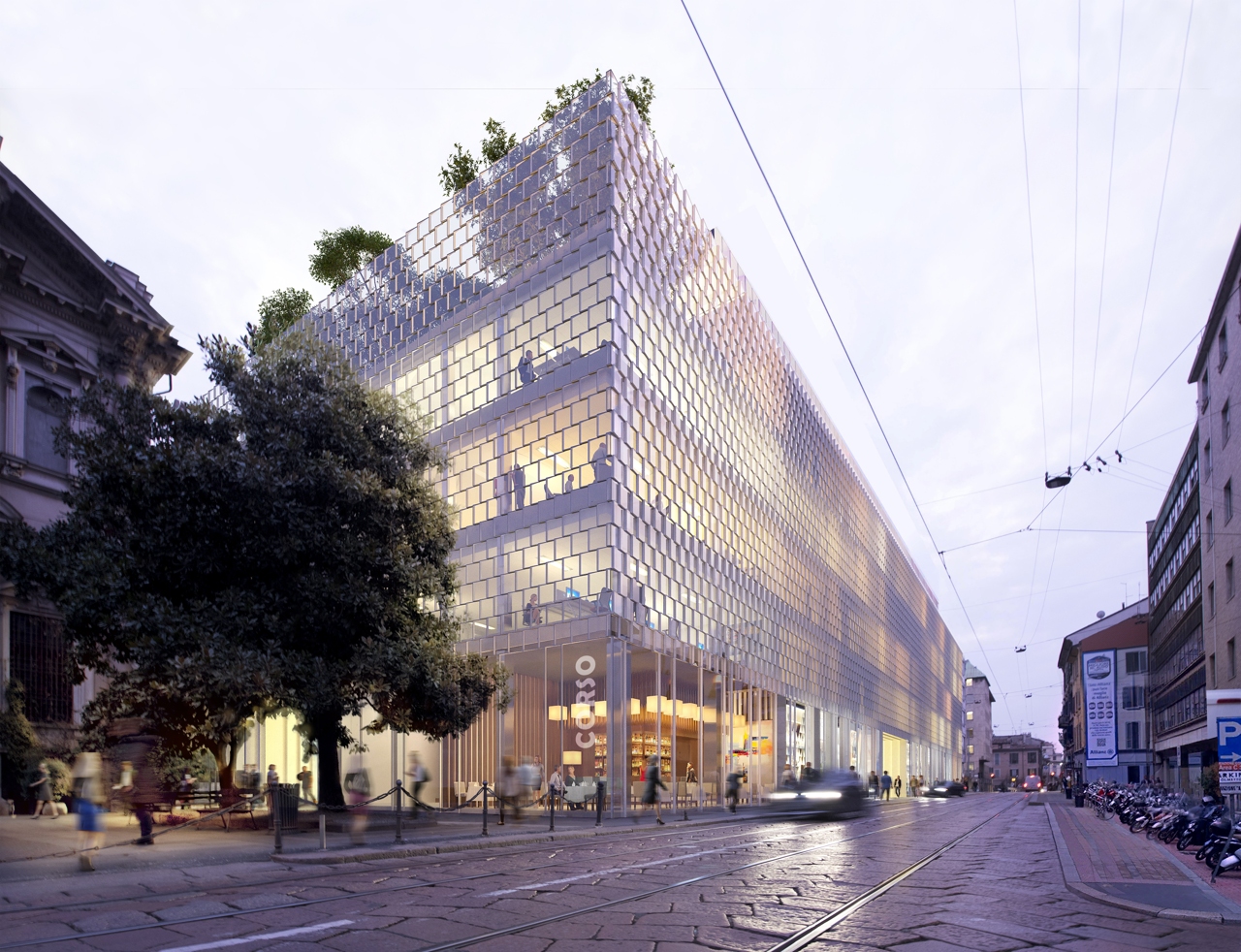The historic Allianz Milanese headquarters become a new and unique campus: SOM’s proposal for Corso Italia 23 in Milan aims to create an increasingly fast-paced and global work environment, taking advantage of the activities within the city.
Originally designed by architects Gio Ponti, Piero Portaluppi and Antonio Fornaroli in the early 1960s, the project transforms the historic about 50,000 sqm Corso Italia complex into a new office destination employing the most advanced sustainability, flexibility, workplace, wellbeing and smart building concepts, while maintaining dialogue with Ponti and Portaluppi’s original design.

The project embraces all facets of sustainability, environment, resource management and people: in line with the targets and aspirations of the LEED Gold Standard, the integrated proposal considers climate and region-specific passive and active strategies to enhance building performance and to establish an environmentally-sound precedent; the project also aspires to meet the WELL Gold Building Standard, which harnesses the built environment as a vehicle to support the health and wellbeing of its users.
The proposed design reinstates our understanding of some of Gio Ponti’s original aspirations for a greater connectivity with the city and within the buildings, and aspires to create a new identity for the campus: with a focus on people, the project’s inside-out approach addresses the needs of users by providing flexible and adaptable office space supported by a robust programme of amenities that meet the demands of contemporary users.
The new courtyard forms the heart of the Corso Italia 23 campus with an appealing garden that celebrates interaction between the buildings community: the dynamic landscape design enables connectivity between the various parts of the campus, with greater visual permeability between inside and outside spaces. It also plays host to a variety of uses, offering amenity and providing opportunity for a richer user experience.
Key interventions to bring the campus in line with contemporary workspaces include the addition of new lobbies, suitable for various occupant profiles: by employing a unified set of materials, detailing and finishing, a “continuous landscape” is formed at ground level, stitching the new elements of the campus together, including simple elevation changes that navigate the office community to the Fitness Centre, Business Centre, Retail, and Food Hall.
In addition, the spiral staircases visually connect the office spaces with the landscape and further collaborative and amenity spaces encourage informal gathering, promote physical activity and wellbeing throughout the work environment.
In order to achieve flexible planning workspace scenarios and to optimise the office area, the core spaces containing stairs and wardrooms are consolidated to provide a larger amount of flexible area to facilitate a variety of workspace strategies that will successfully support employee innovation, collaboration and focused work; and will act as catalyst for employee recruitment and retention.
The office floors benefit from central hub spaces that create a vertical connection through the building, and offer a variety of common space for use by tenants: meeting spaces, phone rooms and lounge areas provide the background for collaboration and the serendipitous interactions which lead to new ideas.
The facade of each building has been carefully redesigned to create a new identity for the campus: additions to the roof offer opportunities to create amenity, executive offices terraces and green space with differing uses and character, with stunning views to Milan.
The rooftop gardens and terraces are available for all campus tenants and provide a retreat from the activity below on the street: lush greenery and quiet enclaves for private conversation provide a necessary break from the bustle of the workplace.
In conclusion SOM’s design proposes to reinvigorate the Corso Italia area of Milan, cementing it as one of the most vibrant cities in Europe and acting as a catalyst for future development.


